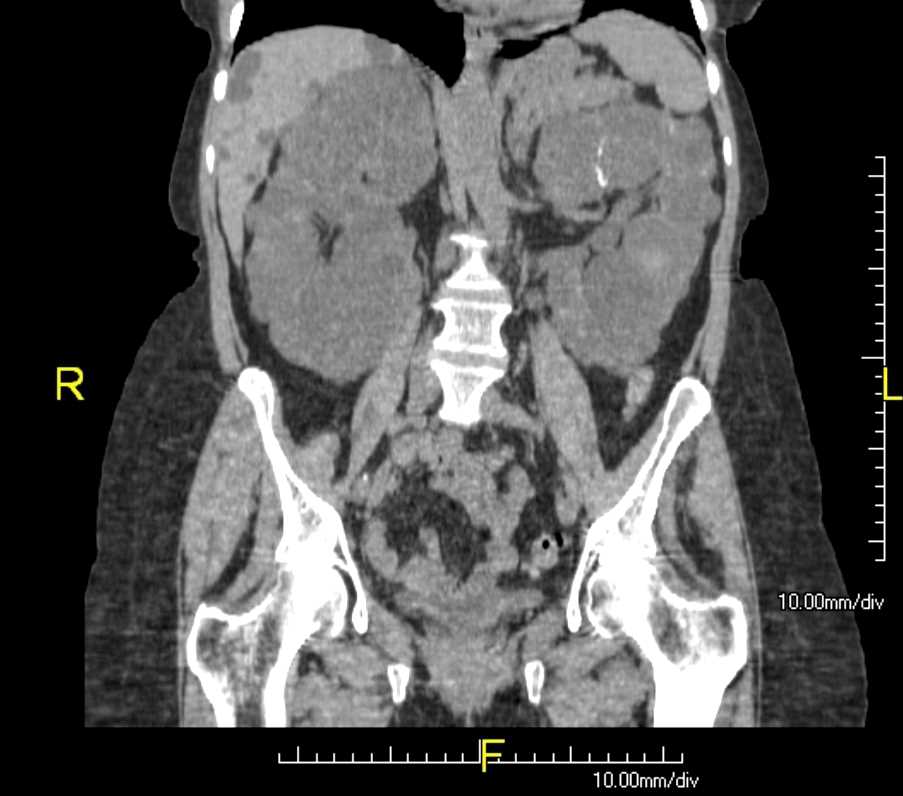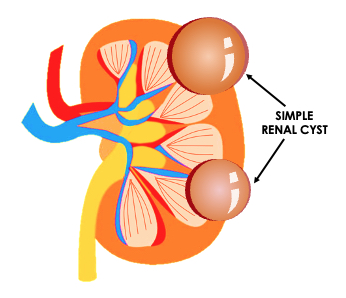[1]
Rediger C, Guerra LA, Keays MA, Wayne C, Reddy D, Ksara S, Leonard MP. Renal cyst evolution in childhood: a contemporary observational study. Journal of pediatric urology. 2019 Apr:15(2):188.e1-188.e6. doi: 10.1016/j.jpurol.2019.01.006. Epub 2019 Feb 1
[PubMed PMID: 30808538]
Level 2 (mid-level) evidence
[3]
Torra R. Recent advances in the clinical management of autosomal dominant polycystic kidney disease. F1000Research. 2019:8():. pii: F1000 Faculty Rev-116. doi: 10.12688/f1000research.17109.1. Epub 2019 Jan 29
[PubMed PMID: 30755792]
Level 3 (low-level) evidence
[4]
Malekshahabi T, Khoshdel Rad N, Serra AL, Moghadasali R. Autosomal dominant polycystic kidney disease: Disrupted pathways and potential therapeutic interventions. Journal of cellular physiology. 2019 Aug:234(8):12451-12470. doi: 10.1002/jcp.28094. Epub 2019 Jan 15
[PubMed PMID: 30644092]
[5]
Ferro F, Vezzali N, Comploj E, Pedron E, Di Serafino M, Esposito F, Pelliccia P, Rossi E, Zeccolini M, Vallone G. Pediatric cystic diseases of the kidney. Journal of ultrasound. 2019 Sep:22(3):381-393. doi: 10.1007/s40477-018-0347-9. Epub 2019 Jan 1
[PubMed PMID: 30600488]
[6]
Weimbs T, Shillingford JM, Torres J, Kruger SL, Bourgeois BC. Emerging targeted strategies for the treatment of autosomal dominant polycystic kidney disease. Clinical kidney journal. 2018 Dec:11(Suppl 1):i27-i38. doi: 10.1093/ckj/sfy089. Epub 2018 Dec 17
[PubMed PMID: 30581563]
[7]
Narayanasamy S, Krishna S, Prasad Shanbhogue AK, Flood TA, Sadoughi N, Sathiadoss P, Schieda N. Contemporary update on imaging of cystic renal masses with histopathological correlation and emphasis on patient management. Clinical radiology. 2019 Feb:74(2):83-94. doi: 10.1016/j.crad.2018.09.003. Epub 2018 Oct 9
[PubMed PMID: 30314810]
[8]
Mensel B, Kühn JP, Kracht F, Völzke H, Lieb W, Dabers T, Lorbeer R. Prevalence of renal cysts and association with risk factors in a general population: an MRI-based study. Abdominal radiology (New York). 2018 Nov:43(11):3068-3074. doi: 10.1007/s00261-018-1565-5. Epub
[PubMed PMID: 29550955]
[9]
Chandrasekar T, Ahmad AE, Fadaak K, Jhaveri K, Bhatt JR, Jewett MAS, Finelli A. Natural History of Complex Renal Cysts: Clinical Evidence Supporting Active Surveillance. The Journal of urology. 2018 Mar:199(3):633-640. doi: 10.1016/j.juro.2017.09.078. Epub 2017 Sep 20
[PubMed PMID: 28941915]
[10]
Corradi V, Giuliani A, Gastaldon F, de Cal M, Mancini B, Montaldi A, Alghisi A, Capelli I, La Manna G, Ronco C. Genetics and Autosomal Dominant Polycystic Kidney Disease Progression. Contributions to nephrology. 2017:190():117-123. doi: 10.1159/000468956. Epub 2017 May 23
[PubMed PMID: 28535524]
[11]
Perico N, Cortinovis M, Remuzzi G. [Treatment of Autosomal Dominant Polycystic Kidney Disease (ADPKD): Somatostatin analogues and mTOR inhibitors]. Giornale italiano di nefrologia : organo ufficiale della Societa italiana di nefrologia. 2016 Sep-Oct:33(5):. pii: gin/33.5.19. Epub
[PubMed PMID: 27796020]
[12]
Ravindran S, Hancox SH, Barlow N, Dunk A, Howlett D. Unexpected Findings in Magnetic Resonance Enterography and Their Clinical Significance. Canadian journal of gastroenterology & hepatology. 2016:2016():4020569. doi: 10.1155/2016/4020569. Epub 2016 Mar 29
[PubMed PMID: 27446837]
[13]
Magistroni R, Corsi C, Martí T, Torra R. A Review of the Imaging Techniques for Measuring Kidney and Cyst Volume in Establishing Autosomal Dominant Polycystic Kidney Disease Progression. American journal of nephrology. 2018:48(1):67-78. doi: 10.1159/000491022. Epub 2018 Aug 2
[PubMed PMID: 30071518]
[14]
Yu J, Li B, Xiang YZ, Qi TG, Jin XB, Xiong H. Should kidney volume be used as an indicator of surgical occasion for patients with autosomal dominant polycystic kidney disease? Medicine. 2018 Jul:97(27):e11445. doi: 10.1097/MD.0000000000011445. Epub
[PubMed PMID: 29979446]
Level 2 (mid-level) evidence
[15]
Raina R, Chakraborty R, Sethi SK, Kumar D, Gibson K, Bergmann C. Diagnosis and Management of Renal Cystic Disease of the Newborn: Core Curriculum 2021. American journal of kidney diseases : the official journal of the National Kidney Foundation. 2021 Jul:78(1):125-141. doi: 10.1053/j.ajkd.2020.10.021. Epub 2021 Jan 6
[PubMed PMID: 33418012]



